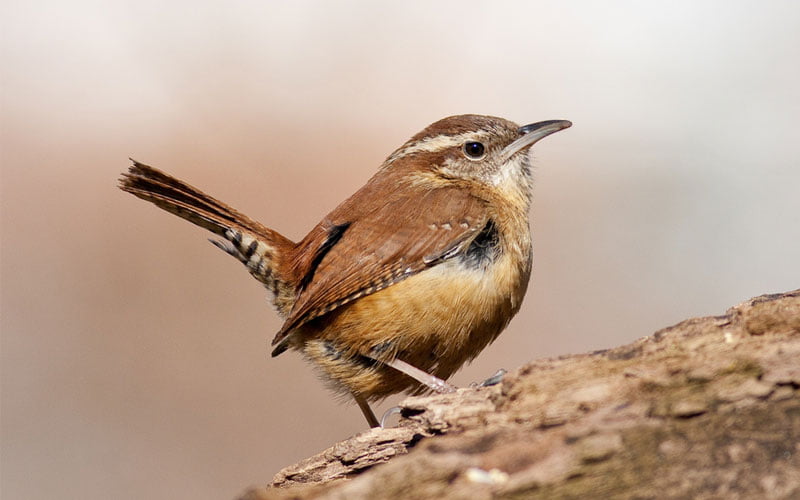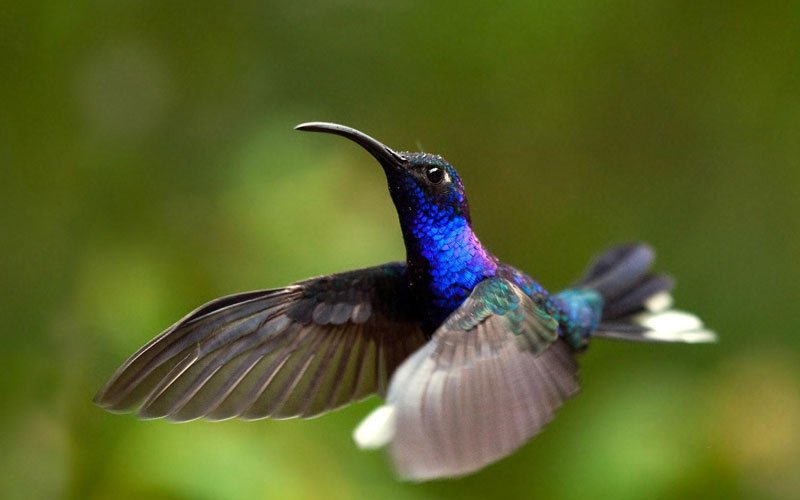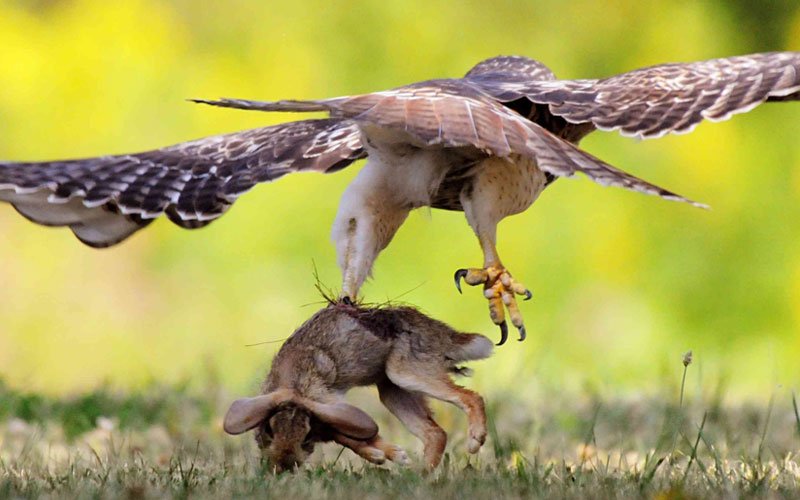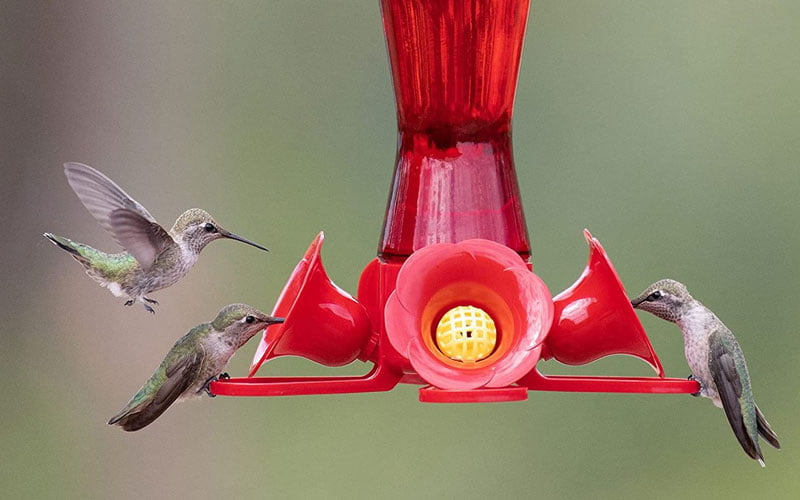The state Bird of South Carolina is Carolina Wren. The honor was officially designated in 1948. In 1948, the state legislature replaced the mockingbird with the state Bird of South Carolina.
The Carolina Wren is quite small and comes with all-over white stripes on its body. The upper part is brownish red which poses a great color combination with the rest of the body.
The Carolina Wren also sings well, and often they sing in pairs. The male Carolina Wren makes a musical sound while the female chattering.
The birds are quite aggressive in their territory. As per the data from American Bird Conservancy, the Carolina Wren sings to defend their territory.
This article will discuss all facts about Carolina Wren and why they are distinct and unique from other birds.
Why Carolina Wren is the State Bird of South Carolina
The Carolina Wren has some distinct features that make it stand out from the queue of other birds. In April 1948, this Carolina Wren was recognized as the state bird of South Carolina.
The Wren is selected as the state bird of South Carolina because this bird mentions ‘Carolina’ in its name. The main reason for nominating this bird as the state bird is its residential habit.
The Carolina Wren resides in most of South Carolina, and they sing all year round. The Carolina Wren has some unique habits that make them one of the best birds of South Carolina.
The Carlina Wren comes with 5-6 inches of body measurements. Most of the time, these birds are found in human dwellings and gardens, and however, the number of wild habitats is also great.
The study says that the birds generally live in Eastern and Central America. The color combination on the body of Carolina Wren is marvelous. They have a chestnut brown upper part, while the cinnamon is under. Their eyes are designed with white stripes.
Carolina Wren – Quick Facts
| Prey On | Insects |
| Common food | Omnivore |
| Weight | 0.6-0.8 Oz |
| Height | 4.7-5.5 inch |
| Skin | Feather |
| Conservation Status | Least Concern |
| Kingdom | Animalia |
| Class | Aves |
| Scientific Name | Thryothorus ludovicianus |
| Family | Troglodytidae |
Carolina Wren – The State Bird Of South Carolina
The Carolina Wren has different characteristics that make these birds special from the others. You can identify their unique characteristics from the above passage.
Diet
The Carolina Wrens generally prefer to eat insects and spiders. Some other common foods of Carolina Wren are caterpillars, grasshoppers, bottles, etc. Occasionally, the Wrens also eat lizards, frogs, snakes, etc. Some species also eat plant matter, fruit pulp, etc.
Nesting Habit
Generally, the Carolina Wrens build their nest in cavities 3-6 feet off the ground. Sometimes, they nest in vegetation shaded ground also.
The Carolina Wrens have an adaptive type of nesting Habit. They use flowerpots, mailboxes, tank covers, etc., to build their own nest. You can also find their nests in old coats, boots, etc
Male and female Carolina Wren builds an est together. They keep one partner at the site while the other collects the materials.
They generally take one week or more when making the first nest. But after that, they can build it in just 3-4 days.
The nest of Carolina Wren comes in a cup shape with a side entrance. The nest is built loosely, and it uses a variety of materials such as bark strips, dried grasses, etc.
The female Wrens add other materials after incubation. Their nests are generally 3-9 inches long and 3-6 inches wide.
Behavior
Carolina Wrens go to their business alone or in a group. Once the nestlings are fledged, they feed them together also. The Wrens also find pairs who stay with them year-round.
The Carolina Wrens are territorial and defend their territory throughout the year, and they aggressively chase intruders from their territory.
They mostly use their songs and calls to advertise their presence in their territory. Even when the predators come, they start to call an alarm and chase them off from their place.
The Carolina Wrens do not migrate, and they stay in the same place throughout the year. The Carolina Wrens are diurnal and active throughout the day.
Reproduction and Life Cycle
The Carolina Wrens breed between October to March. Before mating, the male birds dance around the female to display their courtship. Sometimes they also bring food for the female to attract her.
They make around 8-10 nests for nestling, and they lay 4-8 eggs in a single brood during this time. Their eggs are 1.7-2.1 cm long and come with a white creamy pinkish shade.
The female bird incubates the egg, which takes 12-16 days. During incubation, the male birds feed the female.
The female Carolina Wren provides 2-3 broods each year and raises them. The nestlings are born with closed eyes and pale greyish feathers.
The baby birds leave the nest after 12-14 days once they become hatchlings.
Conservation Status
The population of Carolina Wrens has drastically changed between 1966-2022, and the IUCN (International Union for Conservation of Nature) has announced them as the least concerned species.
The Carolina Wrens are not any declined birds. There are 18 million Carolina Wrens on this planet, and the Wrens are divided into 88 species with 19 genres.
Location
The scientific name of Carolina Wren is Thryothorus ludovicianus, generally found in the South Eastern United States. Major species of these birds are also found in North-east Mexico, Yucatan Peninsula.
The Carolina Wrens generally prefer to live in bottomland woods where thick vines and bushes are found.
Size and Look
The Carolina Wrens generally have bright colors, and the birds are even tinier than the sparrows. The sweet melodies of Carolina Wren can be heard from every nook and corner of the tree.
These chunky Wrens come with a small round body and a large head, and a little neck. They come with bright reddish-brown feathers on top and warm orange feathers on their underparts.
Their size and color no doubt present them as tiny and cute creatures. These beautiful birds are also a visual treat for everyone’s life.
Communication
The Carolina Wren make clear sounds, and their sound is audible from every part of the dense forest. The Carolina Wrens generally sing in pairs.
While the male Wrens offer sweet melodies, the female one adds their chattering note. They sing to defend territories, keeping other birds away from their nest.
Flying Habit
The Carolina Wren generally can’t fly too fast as they are not adaptive to this nature. But they fly in their areas in search of food and collect materials for building nests.
Did You Know
- The captive male Carolina Wren sings 3000 times in a single day.
- The female Carolina Wren keeps a snakeskin inside their nest.
- The oldest, Carolina Wren, loved six years and one month.
- Mercury contamination has affected their population badly.
- The Carolina Wrens also get infestation by larvae, rocks and mites. Sometimes it may lead to death.
- Their territory size is not more than 00.1 to 0.081 km.
Conclusion
The Carolina Wrens are one of the cutest creatures you can find on the planet. The most interesting thing about them is the melodious song that makes them different and unique.
You can find these finds almost everywhere in the UK. To attract these tiny birds in your backyard, hang boxed with some of my food in the front open.
They try to settle in a place with plenty of food, water and cover. But make sure the place is free from predators. Then, you will surely attract these cute guests to your home.
Frequently Asked Questions
Q: When did the Carolina Wren turn into the state bird for South Carolina?
In 1948, the Carolina Wren were announced as the state bird of South Carolina. As the legislative dent the mockingbird’s distinction, they give this honor to Carolina Wren.
Q: What is the symbol for South Carolina?
The Carolina Wrens are designated as the state bird of South Carolina because of their song and some other distinct features. The palmetto and crescent of the state flag are often known to be the symbol of the state bird of South Carolina.
Q: Is Carolina Wren the official state bird of South Carolina?
Yes, the Carolina Wrens are the official state bird of South Carolina as per Act Number 693 of 1948. These tiny birds are found in almost every place in South Carolina.
















